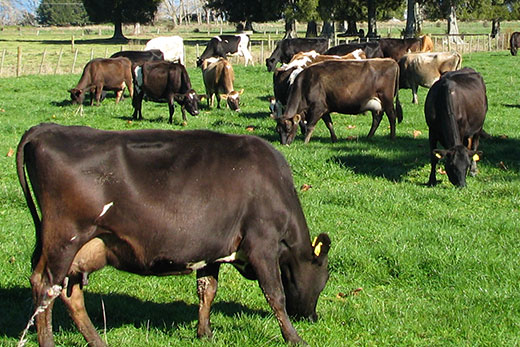A major issue in New Zealand cows are the diseases of mastitis and metritis.
There are various reasons for the occurrence of both, but one of the main reasons is clinical and sub-clinical milk fever.
“In New Zealand approximately 40 per cent of the herd will experience either clinical or sub clinical milk fever,” says Sollus head nutritionist Dr. Joe McGrath.
While cows are rarely culled (outside of deaths) for milk fever itself, they are regularly culled for other reasons that are caused by milk fever.
“We know that herds with high incidence of metabolics have poor health, but is it related? Published research has shown that milk fever, clinical or sub clinical, directly increases the incidence of many diseases,” says Dr. McGrath.
“In one study early-stage mastitis increased the odds ratio by 8.1 and in the case of retained foetal membranes, which lead to metritis, the increase was 3.2.
“Mastitis and metritis are major reasons for cows leaving the herd and costing money.
“We can’t sell the milk, we need to treat them and their chance of getting in calf is much less, especially in our seasonal systems.”
The other major costs that are rarely monitored are time spent by staff tending to these diseases, and opportunity cost.
“If a cow leaves within 50 days in milk she has cost you a full lactation worth of milk as you have wintered her, calved her, plus her salvage value is much less than at the end of last season.
“Why does milk fever increase the risk of these diseases? The first reason is immunity. Research has shown that low blood calcium reduces a measure of immunity called neutrophil oxidative burst, meaning cows with low blood calcium have less chance in resisting/ fighting infection.”
The second reason is muscle strength and Calcium is critical for this.
“Smooth muscles are often the first to lose strength when calcium is deficient and the ones we are concerned about are in the uterus and the teat sphincters,” says Dr McGrath.
“Poor teat sphincter closure means easy access for bugs post milking, and for the uterus it means the inability to crunch down and expel the placenta cleanly.”
At the end of the season when reflecting on why cows have left the herd, Dr McGrath says to think past the initial symptom and focus on the cause.



0 Comments
Leave a Comment